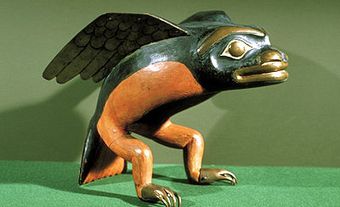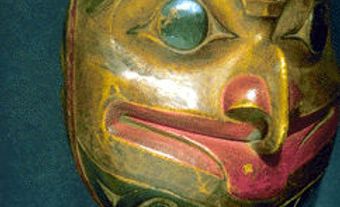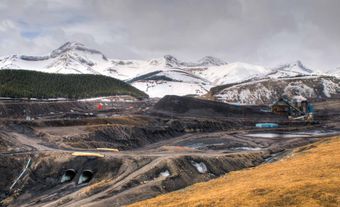Settlement and Development
Kaien Island was once a meeting place of the Tsimshian and Haida peoples. Prince Rupert (named for the first Hudson's Bay Company governor) was envisioned in the early 1900s as the western end of the Grand Trunk Pacific Railway (GTPR). Some hoped the town would rival Vancouver as Canada's outlet along the Pacific coast, but the hoped-for boom never materialized. The fishing industry became important to the city's economy after the First World War. During the Second World War, the port became a shipbuilding centre and was used by the American army as a transportation base for soldiers and materials to Alaska, the Pacific Islands and the East Asia. After the war the economy received a boost with the development of a pulp mill on Watson Island.
The port of Prince Rupert (1912) was designated a national port in 1972. Fairview, a general cargo and forest products terminal, was completed in 1977. Twenty years later, in 1997, the Prince Rupert Port Authority was established as the port’s governing body. In the early 1980s, new interest in the coalfields of northeastern British Columbia affected the city. Ridley Terminals, a coal shipment facility, opened on nearby Ridley Island in 1984. In 2019, the Ridley Island Export Terminal began to ship propane to Asia.
Economy
The Pacific Rim countries are the destination for the majority of the exports through Prince Rupert. Although the city suffered in the 1990s with the closure of the coal mines of northeastern British Columbia and of its pulp mill in 2001, trade with China and other Asian countries has since rebounded. Prince Rupert is the most important fish-landing port on the northwest coast and the terminus of the BC and Alaska ferry systems. Tourism is growing rapidly with the expansion of cruise ship traffic, and locally in terms of sportfishing.
Cultural Life
Kwinitsa Railway Station Museum, in one of the last remaining stations of the Grand Trunk Pacific Railway (built circa 1912), depicts Prince Rupert's development. The Museum of Northern British Columbia, in the award-winning Chatham Village Longhouse, provides insight into First Nations culture and history. The Lester Centre of the Arts is the city's performing arts venue. The Prince Rupert Daily News was published for 100 years, from 1910 to 2010. Prince Rupert is home to two post-secondary campuses: Coast Mountain College and University of Northern British Columbia.

 Share on Facebook
Share on Facebook Share on X
Share on X Share by Email
Share by Email Share on Google Classroom
Share on Google Classroom



